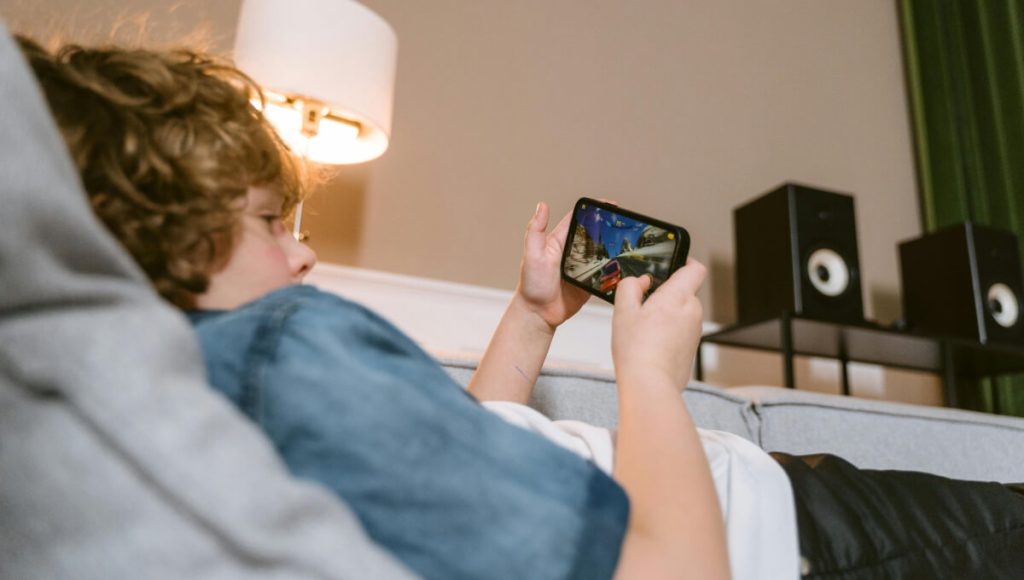
In today’s digital world, online gaming has become a favorite pastime for kids. Whether it’s Roblox, Fortnite, Minecraft, or Call of Duty, children are spending hours exploring virtual worlds, making new friends, and enhancing their gaming skills. But as much fun as gaming is, it also comes with potential risks like cyberbullying, online predators, screen addiction, and in-game purchases.
As a parent, you want to ensure your child’s online safety without completely ruining the fun. The good news? It’s absolutely possible! In this guide, we’ll explore how you can monitor your child’s gaming activities while still allowing them to enjoy their favorite games responsibly.
Why Should You Monitor Your Child’s Online Gaming?
Online gaming can be both entertaining and educational, but it’s essential to be aware of its risks:
- 🎮 Stranger danger – Many multiplayer games have open chat features where kids might interact with strangers.
- 📱 Screen addiction – Uncontrolled gaming can lead to unhealthy screen habits and poor sleep quality.
- 💳 In-game purchases – Many games offer microtransactions that can result in accidental spending.
- 🕵️ Cyberbullying & Toxic behavior – Online communities aren’t always friendly; some players engage in bullying and harassment.
How to Monitor Your Child’s Gaming Without Ruining the Experience
1. Set Up Parental Controls in Popular Games
Most modern games offer built-in parental control settings that allow you to restrict inappropriate content, manage screen time, and control in-game purchases. Here’s how:
Roblox:
- Linked Parent-Child Accounts: Parents can now link their accounts to their child’s, allowing remote management of settings and access to insights such as daily screen time and friend lists.
- Age-Based Content Restrictions: Children under nine are automatically restricted to age-appropriate content.
- Chat Restrictions: Users under 13 are blocked from sending messages outside of games, enhancing protection against unsolicited communications.
- Parent PIN: A four-digit PIN ensures that only parents can modify account settings.
Fortnite:
- Voice and Text Chat Restrictions: Parents can disable in-game voice and text chat to prevent communication with strangers.
- Mature Language Filter: This feature replaces inappropriate language in text chat with symbols, ensuring a child-friendly environment.
- Friend Request Management: Parents can require a PIN for adding new friends, allowing oversight of their child’s in-game connections.
- Playtime Reports: Weekly playtime reports are sent to the parent’s email, providing insights into the child’s gaming habits.
Minecraft:
- Multiplayer Access Control: Parents can restrict access to multiplayer servers, allowing play only on private servers or Realms.
- Chat Settings: Options are available to disable chat functions, preventing exposure to unsolicited messages.
- Microsoft Family Integration: For Xbox and Windows users, Minecraft integrates with Microsoft Family settings, enabling parents to set screen time limits and manage purchases.
2. Use a Parental Control App for Extra Security
While built-in game settings help, a dedicated parental control app gives you more control over your child’s online activities.
KidsNanny: AI Powered Parental Control For Android & iPhone.
✅ AI-Powered Screen Time Management – Set daily screen time limits to prevent excessive gaming and ensure a balanced digital lifestyle.
- App Limits: Sets limits on the child’s app usage for specific hours or days.
- App Usage: This feature provides a detailed report on the devices used by your child.
✅ Game & App Blocking – Block access to specific games, or set time-based restrictions to limit gaming sessions.
- Downtime: Restricts access to all apps for a specified duration.
- Always Allowed: Permits continuous access to certain apps.
- Block App: Prevents access to specific apps or categories.
✅ Advanced Web Filtering – Automatically filter out inappropriate websites, harmful content, and distractions to create a safer browsing experience.
- Block by Severity Index – Restrict access based on content safety levels.
- Safe Browsing Mode – Filter out unsafe search results for a secure web experience.
- Block Websites by Category – Prevent access to adult, gambling, and social media sites.
- Block Websites by Domain – Manually block specific sites for added protection.
✅ Real-Time Activity Monitoring – Get instant alerts on newly installed and uninstalled apps, browser searches, visited websites, and watched YouTube videos directly on your mobile device. Plus, with Screen Scanner, periodically capture and analyze screenshots of your child’s device activity. If inappropriate content is detected, you’ll receive alerts with relevant screenshots, ensuring safer digital habits without constant interruptions.

3. Educate Your Kids About Safe Gaming Practices
Talking to your child about online gaming safety is one of the best ways to protect them. Teach them:
📌 Never share personal information like real name, address, or school.
📌 Only accept friend requests from people they know in real life.
📌 Report and block any players who are rude, inappropriate, or threatening.
📌 Take breaks to avoid gaming addiction and encourage outdoor activities.
4. Play Games Together!
One of the most effective ways to monitor your child’s gaming is to play with them! This not only helps you understand the game’s environment but also strengthens your bond with your child. Try engaging in:
- 🏰 Minecraft Creative Mode – Build amazing structures together.
- 🔫 Fortnite Team Matches – Partner up in a friendly match.
- 🎮 Roblox Mini-Games – Explore different game worlds and challenges.
5. Set a Healthy Gaming Routine
Instead of banning games outright, create a balanced screen time routine. For example:
- Weekday Rule: Playtime is only after homework and chores.
- Weekend Rule: Set a daily limit (e.g., 2 hours of gaming).
- Tech-Free Zones: No gaming during family meals or bedtime.
Monitor their Screen time, App usage, Screen Scanner, Live location and more with KidsNanny.
Final Thoughts
Online gaming is an exciting and fun experience for kids, but it’s important to set boundaries to keep them safe and responsible. By using parental controls, monitoring chats, setting screen time limits, and engaging in discussions, you can allow your child to enjoy their favorite games without exposing them to unnecessary risks.







